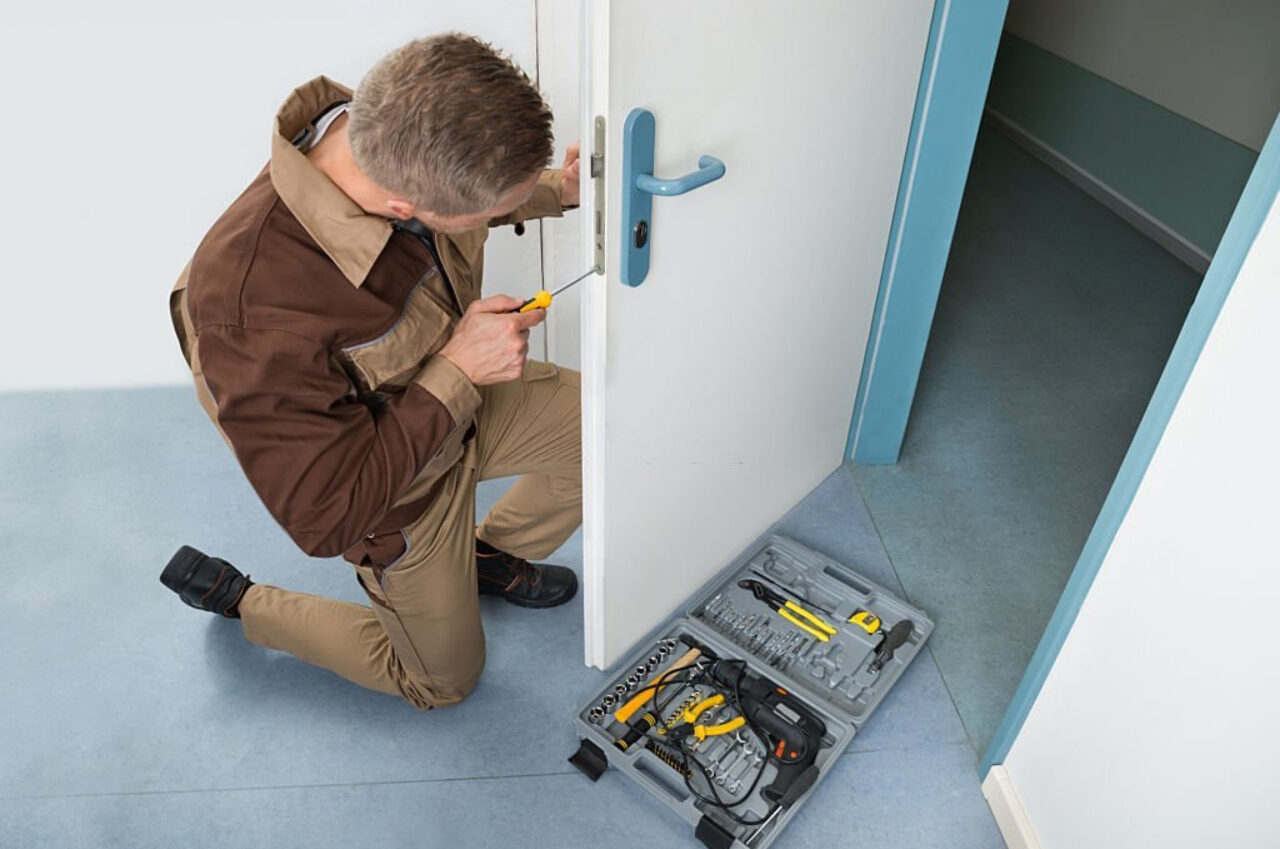Every sector uses its lingo. These phrases and expressions may need to be clarified for someone unfamiliar with the typical tasks a particular trade performs, and the locksmith sector is no exception. Maximum Lock & Safe created this helpful reference book to help you comprehend the terms, acronyms, and expressions used by professional locksmiths regularly. Here, you’ll find helpful information that will enable you to understand better and communicate your desires.
Lock Rekey
When rekeying a lock, a locksmith removes the lock cylinder’s pins and springs and replaces them with fresh components that work with the new key. On the other hand, essential control is just keeping track of all the keys used to open locks. Once keys are loaned out, essential control is gone.
Key Biting
This means the actual essential cuts. This is typically stamped on the key’s “bow” or head on new locks.
Key Bow
Essential bow is the term for the top of the key, frequently utilized as the handle or grip.
Broach
The term “broach” describes the grooves on the side of the key that are unique to each manufacturer’s keyway.
Cam
The component on the lock’s back, known as the cam, engages the lock bolt mechanism.
Grand Master Key
This key operates all locks that are keyed according to the established master key system. GMK is frequently stamped on the key.
Sub Master Key
This critical functions in a master key system under the Grand Master Key for a particular group. For instance, we may have a sub-master for every building floor with numerous floors. Unlike the Grand Master Key, which opens all locks in the same building, this key will only open doors on that floor.
Change Key
This is the name given to the individual keys below the Grand Master and Sub Master Keys in the master key system.
Cross Keying
This is when one or more keys open a lock in a master key system. This happens frequently in an uncharted master key system when the following key is chosen randomly inside the system without referencing the charted system. This represents a significant security violation and should never be used.
High-Security Key
These keys offer the highest level of security. These keys can only be reproduced or made by someone with valid identification and are often controlled by the locksmith under contract with the lock manufacturer. These keys are typically distributed along with a critical control card. This card must be shown to the locksmith when new keys are needed.
Cylinder Bumping
When bumping it, the key is initially put into the lock’s keyway by one notch (pin) or pin short of full insertion. The key can be pushed farther into the keyway by pushing it inward. All critical pins in the lock receive a slight impact force from the bump key’s precisely crafted teeth. The driver pins receive this force from the key pins, which remain stationary. One may visualize this physical motion by witnessing the identical result on Newton’s Cradle desktop toy.
Due to the high degree of elasticity in the pin movements, the driver pins briefly ‘leap’ away from the key pins and move higher than the cylinder (shear line of the tumbler) before being forced back by the spring to rest against the key pins again. Even though the key and driver pins only separate briefly during the slight impact, if a light rotational force is continuously applied to the key, the cylinder will turn during this brief period, allowing the lock to be opened while the driver pins are elevated above the keyway.
Lock bumping simply needs a split second to unlock the lock. Although the power of the collision may create an indentation on the face of the cylinder, the lock is not visibly harmed. You can also utilize specific clicking and vibrating instruments made for bumping. These permit repeated bumping against locks that have been promoted as having “bump-proof” capabilities. Key-pin locks can only seldom be bumped. Abloy locks use rotating discs and are the only ones with practically “bump-proof” cylinders since they don’t require pins or springs.
Lock Picking
Lock picking opens a lock without using the original key by adjusting the lock’s parts. Although lock-picking has a reputation for being used with malice, it is a necessary skill for the professional field of locksmithing. Lock-picking tools are forbidden to be owned by most people in some nations, such as Japan; nevertheless, they are available and lawful to own in many other nations as long as they are not intended for use in criminal activity.
Drill Resistant
This refers to a rigid plate or pins in a High-Security lock that will stop a drill bit from penetrating the cylinder core. Regular locks are composed of brass and are easily bypassed through drilling. For instance, the front of the Abloy High-Security locks cylinder has a stainless steel drill plate.
Key Code
This is often the code stamped on the head of the key, though occasionally, as with most office furniture, it may also be stamped on the cylinder’s face. To create a key from scratch for the lock, this blind code is utilized in conjunction with software to obtain the key cuts and appropriate key blanks. Not all numbers on a key’s head correspond to critical codes. They frequently refer to genuine key biting (key cuts). For convenience in ordering new keys and to identify the type of lock key used, it is sometimes referred to as a master key system.
Key Control
Only a High-Security Locking System offers critical control. The keys, however, are patent-protected against copying. According to the conditions of the agreement with the manufacturer of High-Security Locks, only the locksmith in possession of these keys is permitted to make these keys. Contact Maximum Lock & Safe if you’re looking for commercial and residential locksmiths in the GTA and nearby locations. We are committed to understanding our client’s needs and offering them the ideal solution. Our professionals provide locksmithing and door services, such as card access systems, electrified door hardware, customized security master critical systems, automatic door service and installations, hardware installations, new doors, and camera systems.
Conclusion
This glossary of critical phrases for locksmiths has clarified the complex world of locksmithing and given readers a basic comprehension of the language used in the industry. Locksmiths are not only experts in locks and keys but also stewards of security, artisans, and crisis problem-solvers. With this information, people can more easily traverse the locksmithing industry, whether it’s for personal security, seeking the advice of a locksmith, or pursuing a career in this reputable trade. The necessity of remaining knowledgeable about these phrases and concepts cannot be stressed as the locksmithing industry develops with ongoing technological advancements. Locksmiths continue to be a pillar of security in a constantly evolving world, and their commitment to safeguarding our residences, places of work, and assets is evidence of their critical importance in our lives.
For more insights and expert tips on locksmith services and security solutions, explore our comprehensive guides on residential locksmith, commercial locksmith, and emergency locksmith services at FixItMatey. Learn more about our mission and team on our About Us page. For any inquiries or assistance, don’t hesitate to reach out via our Contact page. Stay informed and secure with our step-by-step tutorials and professional advice. Visit FixItMatey for all your locksmith needs!
FAQs
What are the terms for the parts of a key?
The bit or blade, which slips into the lock’s keyway and distinguishes between different keys, and the bow, intentionally left protruding so that the user can exert tension, make up a conventional key, a little piece of metal.
What are locksmith tools called?
Most locksmiths employ tension wrenches and key turners for a straightforward lock and critical system. Expert locksmiths frequently employ modern tools, including grinders, milling machines, and cylinder crackers.
How many keys should a locksmith give you?
How many keys should I typically get when I buy a replacement lock? Three to five keys are new, depending on the type of lock. Since there are usually enough keys with a new fit, you should only pay the same amount.
What are the roles and responsibilities of a locksmith?
A locksmith’s responsibilities might be selling and installing suggested locking mechanisms, making duplicate keys using a key-cutting machine, and altering lock combinations. Additionally, they examine, tweak, and fix security systems, door hardware, and locks.

